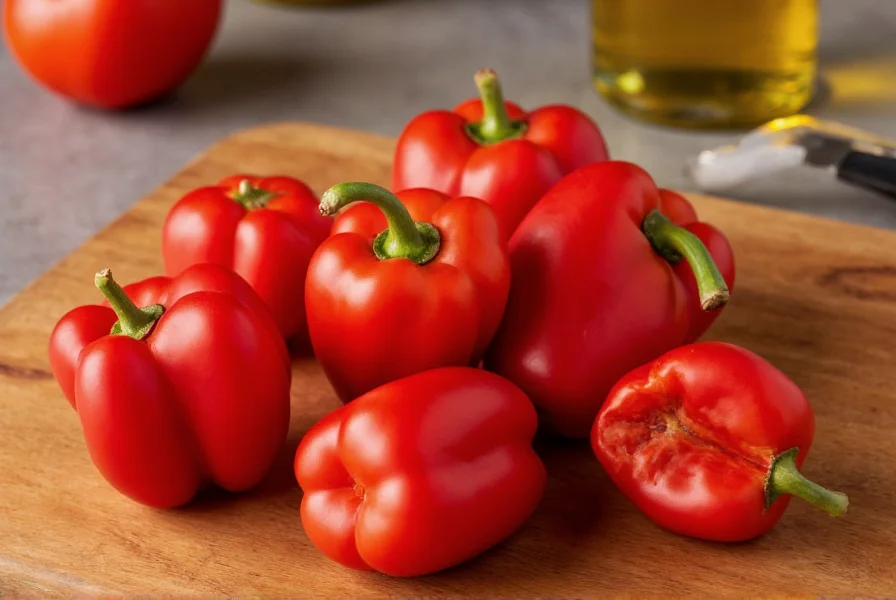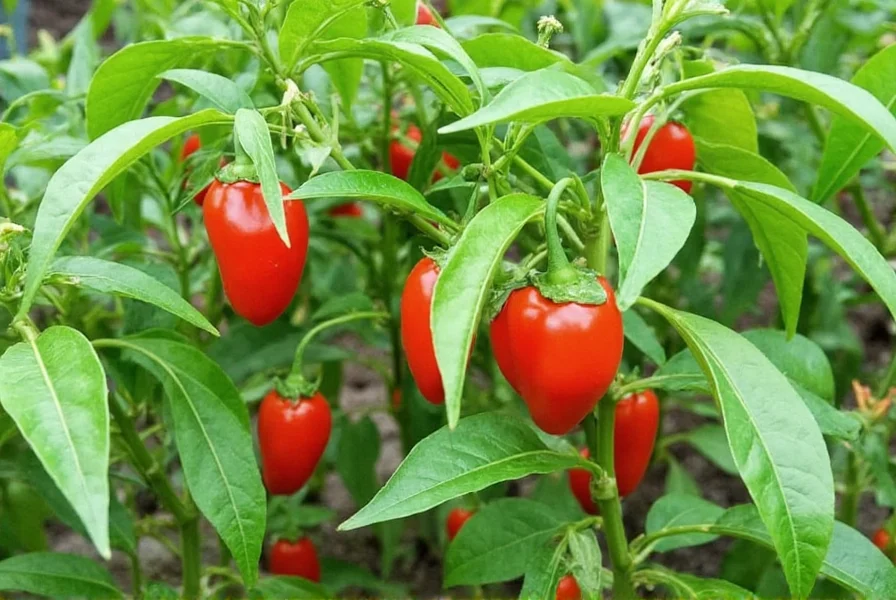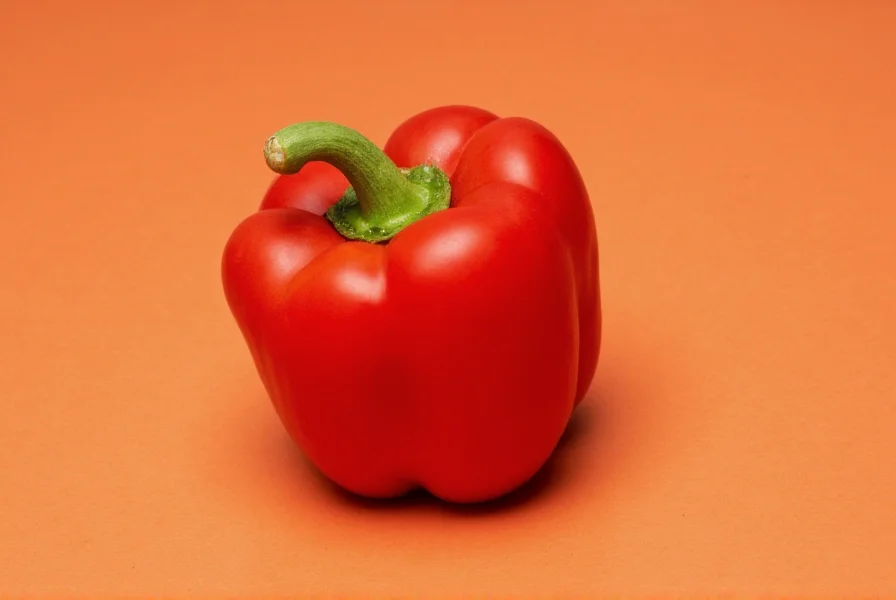When exploring the world of sweet peppers, understanding the unique qualities of pimento peppers becomes essential for both home cooks and culinary professionals. These vibrant red peppers stand apart from their more common relatives with distinctive characteristics that influence their culinary applications and nutritional benefits.
Understanding Pimento Pepper Characteristics
Pimento peppers, scientifically classified as Capsicum annuum, represent one of the sweetest varieties within the chili pepper family. Their most notable feature is their remarkably low heat level, registering between 100-500 Scoville Heat Units (SHU), compared to jalapeños which range from 2,500-8,000 SHU. This places pimentos firmly in the sweet pepper category rather than hot peppers.
The physical characteristics of authentic pimento peppers include:
- Heart-shaped or triangular form with a distinctive pointed tip
- Typical length of 2-3 inches (5-7.5 cm)
- Thick, meaty walls ideal for stuffing
- Vibrant red color when fully matured
- Sweet, slightly fruity flavor with subtle earthy notes
| Pepper Type | Scoville Heat Units | Shape | Flavor Profile |
|---|---|---|---|
| Pimento Pepper | 100-500 SHU | Heart-shaped, 2-3" long | Sweet, fruity, mild |
| Bell Pepper | 0 SHU | Blocky, 3-5" long | Mild, vegetal |
| Cherry Pepper | 500-5,000 SHU | Round, 1-2" diameter | Sweet to moderately hot |
| Jalapeño | 2,500-8,000 SHU | Cylindrical, 2-3" long | Grassy, bright heat |
Pimento Pepper vs Bell Pepper: Key Differences
Many consumers confuse pimento peppers with bell peppers, but several distinguishing factors set them apart. While both belong to the Capsicum annuum species, pimentos are smaller, typically measuring 2-3 inches in length compared to bell peppers' 3-5 inch stature. The shape differs significantly too—pimentos have a distinctive heart-shaped or triangular form with a pointed tip, whereas bell peppers feature a blockier, more angular structure with three or four lobes.
Flavor-wise, pimento peppers offer a sweeter, more complex taste profile than standard bell peppers. Their flesh contains higher sugar content, making them particularly suitable for applications where sweetness is desired without heat. The walls of pimento peppers are also notably thicker than those of bell peppers, which affects their performance in cooking—pimentos hold their shape better when stuffed or roasted.

Culinary Applications of Pimento Peppers
The unique qualities of pimento peppers make them invaluable in numerous culinary traditions. Their most famous application remains as the traditional filling for Spanish green olives, where their sweet flavor perfectly complements the briny olives. In Southern American cuisine, pimento peppers form the essential ingredient in classic pimento cheese, a beloved spread combining shredded cheddar, mayonnaise, and finely diced pimentos.
Chefs utilize pimento peppers in various preparations:
- Roasting and peeling for sandwiches, salads, and tapas
- Adding to cream sauces for subtle sweetness without heat
- Creating pimento loaf, a Southern specialty similar to meatloaf
- Blending into aiolis and dips for color and flavor
- Preserving in vinegar as cocktail peppers (though true cocktail peppers are often hotter varieties)
When substituting pimento peppers in recipes, consider that roasted red bell peppers provide similar color but lack the distinctive sweetness, while cherry peppers offer comparable size but with more heat. For authentic flavor in traditional recipes like pimento cheese, nothing replicates the unique taste of genuine pimentos.
Nutritional Profile and Health Benefits
Pimento peppers deliver impressive nutritional value despite their small size. A single medium pimento pepper (approximately 45g) contains:
- Nearly 100% of the recommended daily intake of vitamin C
- Significant amounts of vitamin A (as beta-carotene)
- Good sources of vitamin B6 and potassium
- Approximately 12 calories per pepper
- 1-2 grams of dietary fiber
The vibrant red color indicates high concentrations of carotenoids, powerful antioxidants associated with reduced inflammation and improved eye health. Unlike hotter chili varieties, pimento peppers contain minimal capsaicin, making them suitable for those sensitive to spicy foods while still providing many of the nutritional benefits associated with peppers.
Growing Pimento Peppers
Gardeners interested in cultivating pimento peppers should note they require similar growing conditions to other sweet peppers but with some specific considerations. These plants thrive in warm climates with temperatures between 70-85°F (21-29°C) and need approximately 65-80 days to reach maturity from transplanting.
Successful pimento pepper cultivation involves:
- Starting seeds indoors 8-10 weeks before last frost date
- Providing full sun exposure (6-8 hours daily)
- Maintaining consistent soil moisture without waterlogging
- Using well-draining soil with pH between 6.0-6.8
- Harvesting when peppers develop deep red color and glossy skin

Storage and Preservation Techniques
Proper storage extends the shelf life of fresh pimento peppers. When stored in the crisper drawer of your refrigerator, unwashed and placed in a perforated plastic bag, they typically remain fresh for 1-2 weeks. For longer preservation, consider these methods:
- Roasting and freezing: Roast, peel, and freeze in airtight containers for up to 6 months
- Canning: Preserve in vinegar brine for cocktail-style peppers
- Drying: Dehydrate for use in spice blends (though this alters their characteristic texture)
- Preparing pimento cheese: The spreadable mixture freezes well for future use
Commercially, most pimento peppers appear jarred or canned since fresh availability remains limited outside specific growing regions. When purchasing jarred pimentos, check for minimal additives—ideally just peppers, water, and vinegar—to maintain the pure flavor profile.
Common Misconceptions About Pimento Peppers
Several misconceptions surround pimento peppers that often confuse consumers. One prevalent misunderstanding involves the spelling—"pimento" and "pimiento" are both correct, with the double-i version reflecting the Spanish origin. Another common error equates pimento peppers with cherry peppers, though cherry peppers typically pack more heat (500-5,000 SHU) compared to pimentos' mild 100-500 SHU range.
Perhaps the most widespread confusion involves pimento peppers versus the pimentos found in grocery stores. Many products labeled as "pimentos" actually contain roasted red bell peppers, which lack the distinctive sweetness and texture of true pimentos. Authentic pimento peppers remain somewhat specialty items outside specific regional markets, leading to frequent substitutions in commercial products.
Conclusion
Understanding the unique characteristics of pimento peppers enhances both culinary applications and nutritional choices. Their mild sweetness, distinctive shape, and vibrant color make them valuable ingredients for specific recipes where authenticity matters. While often substituted with bell peppers due to availability, recognizing the differences between pimento peppers and their relatives allows for more informed cooking decisions and appreciation of their specific culinary contributions. Whether growing them in your garden, seeking them for traditional recipes, or simply expanding your knowledge of pepper varieties, pimento peppers represent a distinctive and valuable component of the culinary world.
Frequently Asked Questions
What's the difference between pimento peppers and bell peppers?
Pimento peppers are smaller (2-3 inches), heart-shaped, and sweeter than bell peppers. They have thicker walls and a more tapered shape compared to the blockier, larger bell peppers (3-5 inches). While both are mild, pimentos contain higher sugar content, giving them a more complex, fruity flavor profile that makes them preferable for specific applications like olive stuffing and pimento cheese.
Can I substitute bell peppers for pimento peppers in recipes?
Yes, roasted red bell peppers serve as the most common substitute for pimento peppers, especially in recipes like pimento cheese. However, bell peppers lack the distinctive sweetness of true pimentos, resulting in a slightly different flavor profile. For closer approximation, add a small amount of sugar or蜂蜜 to roasted bell peppers. Cherry peppers can work for texture but will introduce more heat than traditional pimento applications require.
Are pimento peppers hot?
No, pimento peppers are not hot. They register between 100-500 Scoville Heat Units, placing them firmly in the sweet pepper category. For comparison, jalapeños range from 2,500-8,000 SHU. Pimentos are among the mildest pepper varieties, making them suitable for those sensitive to spicy foods while still providing the nutritional benefits of chili peppers without the heat.
Why are pimento peppers used in olives?
Pimento peppers are used to stuff olives primarily for flavor contrast and visual appeal. Their sweet, mild flavor perfectly balances the briny, salty taste of olives. The vibrant red color creates an attractive contrast against the green olive flesh. Additionally, the soft texture of pimentos complements the firm olive texture, creating a pleasing mouthfeel. Historically, pimento stuffing also helped mask imperfections in lower-quality olives.
Where can I find fresh pimento peppers?
Fresh pimento peppers can be challenging to find in standard grocery stores as they're less commercially widespread than bell peppers. Your best options include farmers' markets during summer and early fall, specialty food stores, Latin American markets (where they're sometimes labeled as 'pimientos'), and through mail-order seed catalogs if you're interested in growing them. Most commercially available "pimentos" come jarred or canned, though these often contain roasted red bell peppers rather than true pimentos.











 浙公网安备
33010002000092号
浙公网安备
33010002000092号 浙B2-20120091-4
浙B2-20120091-4